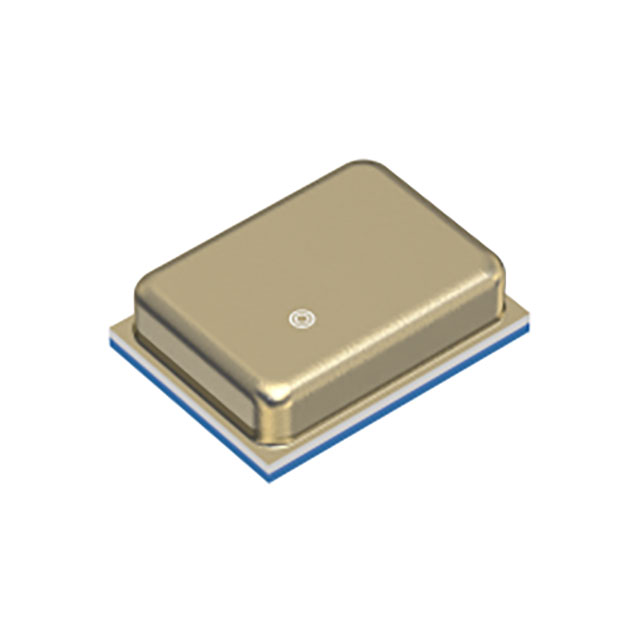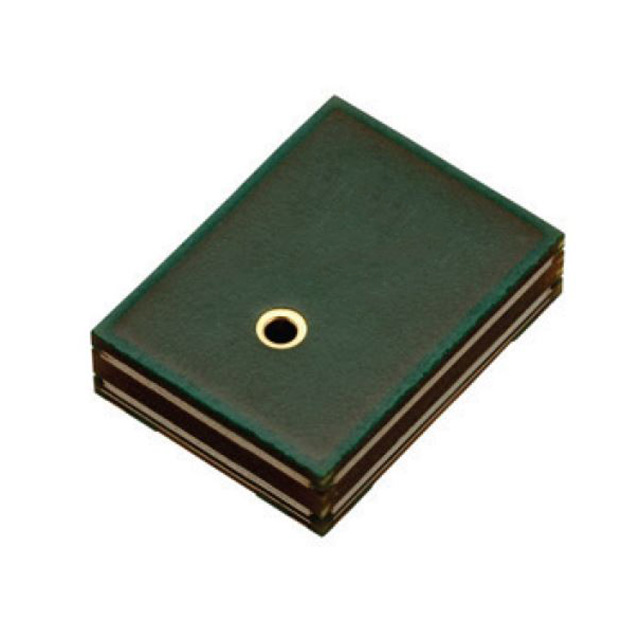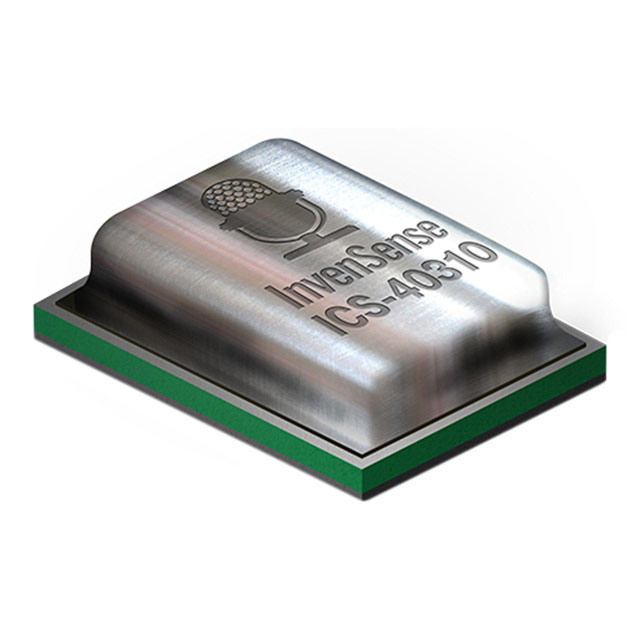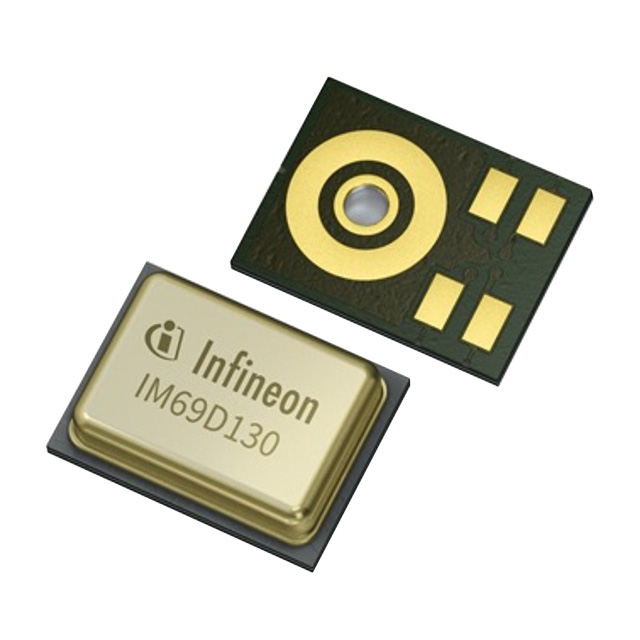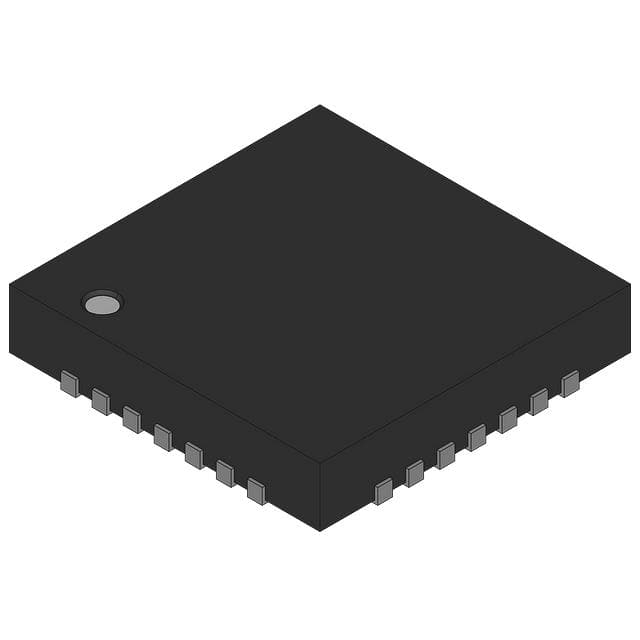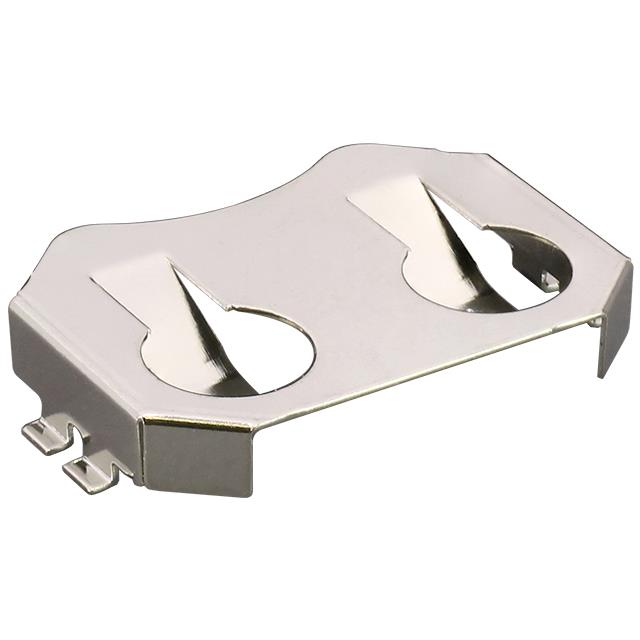STM32F103CBT6
STM32F103CBT6 is a 32-bit microcontroller based on the ARM Cortex-M3 core launched by STMicroelectronics, which belongs to the mainstream performance line of the STM32F1 series.
NCP5623CMUTBG
NCP5623CMUTBG is a three-channel current controller designed for RGB LED driving launched by ON Semiconductor.
Wiznet W5500
W5500 is a hardware-based TCP/IP protocol stack Ethernet controller developed by Wiznet.By communicating with the main control MCU through the SPI interface, W5500 can quickly implement network functions without implementing complex protocol stacks in the main control chip.
Microchip Technology ATMEGA128A-AU
ATmega128A-AU is an 8-bit microcontroller based on AVR architecture produced by Microchip Technology. It is widely used in embedded systems and is popular for its high performance and low power consumption.
Microchip Technology ATMEGA328P-AU
ATMEGA328P-AU is a cost-effective 8-bit microcontroller. Its rich resources, low-power design and good compatibility make it a widely used solution in embedded development, especially for embedded applications that require low power consumption and medium complexity.
Nordic Semiconductor NRF52832-QFAA-R
NRF52832-QFAA-R is a wireless communication chip with excellent performance, low power consumption and easy development. It supports the new features of Bluetooth 5.0, making it widely used in the fields of IoT, smart homes and portable devices. Its powerful computing power and multi-protocol support provide developers with flexible solutions.
ATMEGA328P-PU
ATmega328P-PU is an 8-bit microcontroller manufactured by Microchip Technology (formerly Atmel), widely used in embedded systems and development boards, especially popular on the Arduino platform.
STMicroelectronics LIS3DHTR
STMicroelectronics LIS3DHTR is a low-power, high-performance 3-axis digital accelerometer that is widely used in motion sensing, tilt detection, vibration monitoring and direction tracking. The sensor has a small size, high resolution and low power consumption, making it ideal for battery-powered devices and portable applications.
STMicroelectronics STM32F103VET6
STM32F103VET6 is a 32-bit microcontroller based on the ARM Cortex-M3 core produced by STMicroelectronics. It belongs to the high-performance product line of the STM32F1 series and is widely used in embedded applications such as industrial control, IoT devices, and home appliance control.
STMicroelectronics STM32F407ZET6
STM32F407ZET6 is a high-performance microcontroller produced by STMicroelectronics, which is widely used in industrial automation, Internet of Things, robot control and other fields.
STMicroelectronics STM32F105VCT6
STM32F105VCT6 is a versatile and powerful microcontroller that combines an ARM Cortex-M3 core with a rich set of peripherals and low power consumption. Its 128 KB Flash, 16 KB RAM, and extensive I/O options make it a suitable choice for a variety of embedded applications in industrial, automotive, and consumer markets. Its robust features, such as USB, CAN, ADC, and DMA, along with low-power operation, make it a solid solution for systems requiring real-time processing and efficient power usage.
Texas Instruments ULN2003ADR
ULN2003ADR is a common high current power driver produced by STMicroelectronics. It is a variant of the ULN2003 series and is usually used to control high current loads such as stepper motors, relays, solenoid valves, etc.
STM32F407VGT6 Microcontroller
TM32F407VGT6 is a powerful and flexible microcontroller suitable for a variety of embedded applications. Its high performance, rich peripheral interfaces and powerful processing capabilities make it an ideal choice for developing complex systems.
MCIMX6G2CVM05AB
MCIMX6G2CVM05AB is a powerful application processor that combines high-performance processing capabilities and rich multimedia functions, making it very suitable for a variety of embedded applications. Its low power consumption characteristics and flexible interface design enable it to perform well in various industrial and consumer applications.
STM32F405RGT6
The STM32F405RGT6 is a high-performance 32-bit microcontroller produced by STMicroelectronics. It is based on the ARM Cortex-M4 core and is suitable for embedded applications that require high performance and processing power.
STMicroelectronics LIS3DHTR

LIS3DHTR Introduction
STMicroelectronics LIS3DHTR is a low-power, high-performance 3-axis digital accelerometer that is widely used in motion sensing, tilt detection, vibration monitoring and direction tracking. The sensor has a small size, high resolution and low power consumption, making it ideal for battery-powered devices and portable applications.
Arduino Nano LIS3DHTR 3-Axis Accelerometer Tutorial
Main features of LIS3DHTR:
Sensor type: 3-axis accelerometer (X, Y, Z axis).
Output mode: digital output (I2C/SPI communication interface).
Acceleration range: ±2g, ±4g, ±8g, ±16g (optional).
Resolution: 16-bit data output (each axis).
High sensitivity: 0.244 mg/LSB in the ±2g range, users can choose different ranges according to their needs, and there is a trade-off between sensitivity and measurement range.
Low power consumption: Very suitable for battery-driven systems, supporting low power mode to extend battery life.
Sampling rate: Up to 1.6 kHz in normal mode (depending on the output data rate).
Output Data Rate (ODR): Supports selectable rates from 1.6 Hz to 1.6 kHz.
Operating Temperature Range: -40°C to +85°C.
Package Type: LGA-16 (16-pin lead-free package) for compact designs.
Low Noise: Low noise density for precise motion and vibration sensing.
Communication Interface:
I2C (standard, fast, and high-speed modes) for simple, easy-to-integrate communication.
SPI (up to 10 MHz) provides faster data transfer and more flexible configuration.
Applications:
Smartphones and Tablets: For orientation detection, screen rotation, and motion-based applications.
Wearables: For health monitoring, smart watches, fitness trackers, etc., for detecting motion and activity levels.
Consumer Electronics: For motion sensing devices such as game controllers and remote controls.
Automotive: Vibration monitoring and sensing.
Robotics: For position tracking, motion analysis, and stability control systems.
Industrial Equipment: Vibration analysis, shock detection, and mechanical health monitoring.
LIS3DHTR Parameters and Comparison
LIS3DHTR Similar or Alternative
LIS3DHTR vs LIS3DH vs LIS3DSH vs MMA6331LR1 Comparison
| Feature | LIS3DHTR | LIS3DH | LIS3DSH | MMA6331LR1 |
|---|---|---|---|---|
| Image |  |  | 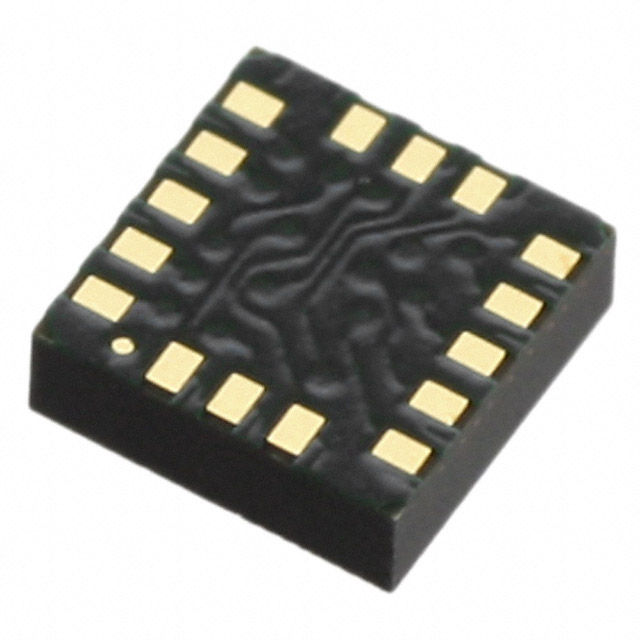 | 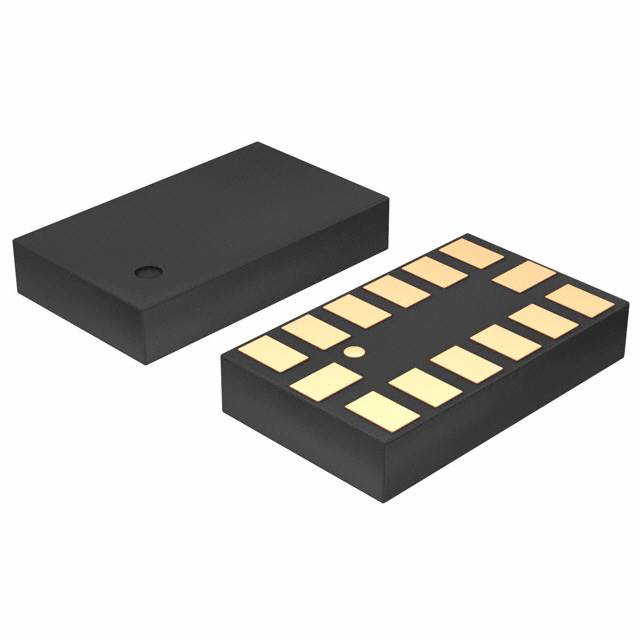 |
| Manufacturer | STMicroelectronics | STMicroelectronics | STMicroelectronics | NXP USA Inc. |
| Sensor Type | 3-axis accelerometer | 3-axis accelerometer | 3-axis accelerometer | 3-axis accelerometer |
| Acceleration Range | ±2g, ±4g, ±8g, ±16g | ±2g, ±4g, ±8g, ±16g | ±2g, ±4g, ±8g, ±16g | ±2g, ±4g, ±8g |
| Package Type | LGA-16 | LGA-16 | LGA-16 | QFN-16 |
| Resolution | 16-bit | 16-bit | 16-bit | 12-bit |
| Sensitivity | 0.244 mg/LSB | 0.244 mg/LSB | 0.244 mg/LSB | 0.024 mg/LSB |
| Max Output Data Rate (ODR) | 1.6 kHz | 5 kHz | 5 kHz | 1 kHz |
| Interface | I2C, SPI | I2C, SPI | I2C, SPI | I2C |
| Power Consumption | Low-power mode (10 µA typical) | Low-power mode (10 µA typical) | Low-power mode (10 µA typical) | Low-power mode (1 µA typical) |
| Operating Voltage | 1.8V to 3.6V | 1.8V to 3.6V | 1.8V to 3.6V | 2.2V to 3.6V |
| Operating Temperature Range | -40°C to +85°C | -40°C to +85°C | -40°C to +85°C | -40°C to +85°C |
| Typical Applications | Smartphones, wearables, consumer electronics | Smartphones, wearables, motion tracking | Motion tracking, industrial vibration sensing, consumer electronics | Consumer electronics, portable devices, smart home applications |
Key Comparison Points:
Resolution: LIS3DHTR, LIS3DH, and LIS3DSH all offer 16-bit resolution, providing higher precision in measurements, while MMA6331LR1 has a lower 12-bit resolution, which may be sufficient for less demanding applications.
Sensitivity: LIS3DHTR, LIS3DH, and LIS3DSH provide a sensitivity of 0.244 mg/LSB at the ±2g range, which is relatively higher compared to the 0.024 mg/LSB sensitivity of MMA6331LR1. This means the LIS3 series can detect smaller changes in acceleration.
Maximum Output Data Rate (ODR): The LIS3DH and LIS3DSH have higher maximum output data rates (5 kHz) compared to LIS3DHTR (1.6 kHz) and MMA6331LR1 (1 kHz), making the former suitable for applications requiring faster data sampling.
Interface: LIS3DHTR, LIS3DH, and LIS3DSH support both I2C and SPI interfaces, providing more flexibility in system integration, while MMA6331LR1 only supports I2C.
Power Consumption: The MMA6331LR1 has the lowest typical power consumption at 1 µA, which is ideal for ultra-low power applications, while LIS3DHTR, LIS3DH, and LIS3DSH typically consume 10 µA in low-power mode, which is still low but slightly higher.
Operating Voltage: LIS3DHTR, LIS3DH, and LIS3DSH all operate within a voltage range of 1.8V to 3.6V, while MMA6331LR1 requires a slightly higher minimum voltage of 2.2V.
Applications: The LIS3 series (LIS3DHTR, LIS3DH, LIS3DSH) is ideal for applications that require higher precision and faster data rates, such as smartphones, wearables, motion tracking, and industrial vibration sensing. MMA6331LR1, with its lower resolution and power consumption, is more suited for applications like consumer electronics, portable devices, and smart home products.
Conclusion:
LIS3DHTR, LIS3DH, and LIS3DSH are ideal for applications requiring high precision, fast data rate, and flexibility in interface choice (I2C/SPI). These sensors are suitable for more demanding applications like motion tracking and industrial vibration sensing.
MMA6331LR1, with its ultra-low power consumption and sufficient precision for less critical applications, is well-suited for low-power consumer electronics and portable devices where battery life is a key concern.
LIS3DHTR PDF Datasheet
LIS3DHTR Datasheet
LIS3DHTR FAQs
1. What is LIS3DHTR?
LIS3DHTR is a low-power, 3-axis digital accelerometer from STMicroelectronics that can measure the acceleration of a device on three axes. It is widely used in scenarios such as motion detection, vibration monitoring, and direction detection, and is suitable for smartphones, wearable devices, consumer electronics, industrial equipment, etc.
2. What is the operating voltage of LIS3DHTR?
The operating voltage range of LIS3DHTR is 1.8V to 3.6V. This makes it suitable for low-voltage systems, especially battery-powered applications.
3. What communication interfaces does LIS3DHTR support?
LIS3DHTR supports two commonly used communication interfaces:
I2C interface (supports standard, fast and high-speed modes)
SPI interface (maximum 10 MHz) Users can select the appropriate interface for data acquisition and transmission according to their needs.
4. What is the maximum output data rate of LIS3DHTR?
The maximum output data rate of LIS3DHTR is 1.6 kHz, which means that it can output up to 1600 data samples per second, which is suitable for real-time sampling and processing of dynamic motion data.
5. What are the acceleration ranges of LIS3DHTR?
The LIS3DHTR provides four acceleration ranges to choose from:
±2g
±4g
±8g
±16g Users can select the appropriate range according to the needs of the application to balance between accuracy and dynamic range.
6. What is the sensitivity of LIS3DHTR?
The sensitivity of LIS3DHTR in the ±2g range is 0.244 mg/LSB, and the sensitivity varies in different acceleration ranges. The higher the sensitivity, the smaller the minimum acceleration change that the sensor can detect.
7. Does the LIS3DHTR support low power mode?
Yes, the LIS3DHTR supports low power mode, with a typical power consumption of 10 µA (in low power mode). This makes it ideal for battery-powered devices that can continue motion detection or data acquisition while maintaining low power consumption.
8. What is the operating temperature range of the LIS3DHTR?
The operating temperature range of the LIS3DHTR is -40°C to +85°C, making it suitable for use in a variety of environmental conditions, especially industrial and outdoor equipment.
9. What is the package form of the LIS3DHTR?
The LIS3DHTR provides an LGA-16 package with a small package size, suitable for space-constrained applications such as handheld devices, smart home devices, etc.
10. What are the application scenarios of the LIS3DHTR?
The LIS3DHTR is widely used in:
Smartphones: for direction detection, screen rotation, motion sensing, etc.
Wearable devices: such as smart watches and fitness trackers, used to monitor the user's motion status.
Consumer electronics: such as remote controls, game controllers, smart home devices, etc.
Industrial applications: vibration monitoring, equipment health monitoring, robotic applications, etc.
11. What is the data output format of LIS3DHTR?
LIS3DHTR outputs 16-bit data, representing the acceleration value of each axis. The data is transmitted through the I2C or SPI interface, and the user can obtain the acceleration information by reading the data register.
12. How to set the acceleration range of LIS3DHTR?
The acceleration range can be set programmatically, and the user can choose the range of ±2g, ±4g, ±8g, ±16g. This setting affects the sensitivity and measurement accuracy.
13. Does LIS3DHTR support the detection of high acceleration events?
The acceleration range provided by LIS3DHTR is suitable for most applications. If the application needs to detect higher acceleration events (such as collision or vibration), a larger range (such as ±16g) can be selected as needed to ensure that the sensor can handle these high acceleration signals.
14. Does LIS3DHTR have a built-in FIFO buffer?
Yes, LIS3DHTR has a built-in FIFO (first-in-first-out) buffer to support temporary storage of data, reduce interference and interrupt requests from the microcontroller, and is suitable for real-time data acquisition.
15. How does LIS3DHTR sample data?
Data sampling is transmitted via I2C or SPI bus. Users can configure the sensor's output data rate, sampling mode, and read acceleration values periodically as needed.
16. Is LIS3DHTR suitable for use in high-vibration environments?
LIS3DHTR has a large acceleration range (±2g to ±16g) and a built-in low-power mode that is ideal for long-term operation. It can also work stably in environments with large vibration or shock, and is particularly suitable for applications such as industrial equipment, health monitoring, and motion sensing.


